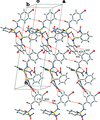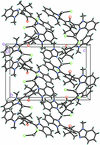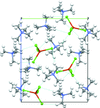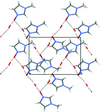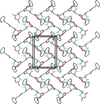issue contents
March 2017 issue

Cover illustration: The drug afatinib is a specific inhibitor of the ErbB family of tyrosine kinases, and this report describes a new solvate. The structure has crystallographic interest in that two afatinib molecules are found the asymmetric unit, along with other species. The API molecules are related across a pseudo centre of symmetry but this is broken down by the location of the oxygen atom and CH2 moieties in the outer tetrahydrofuranyl substituent, an observation correlated with specific C-H N and C-H
N and C-H O interactions in the crystal involving the acetonitrile solvent. See: Zeller, Araujo, Parker, Singh Rai & Byrn [Acta Cryst. (2017). E73, 417-422].
O interactions in the crystal involving the acetonitrile solvent. See: Zeller, Araujo, Parker, Singh Rai & Byrn [Acta Cryst. (2017). E73, 417-422].
research communications








































































 journal menu
journal menu











